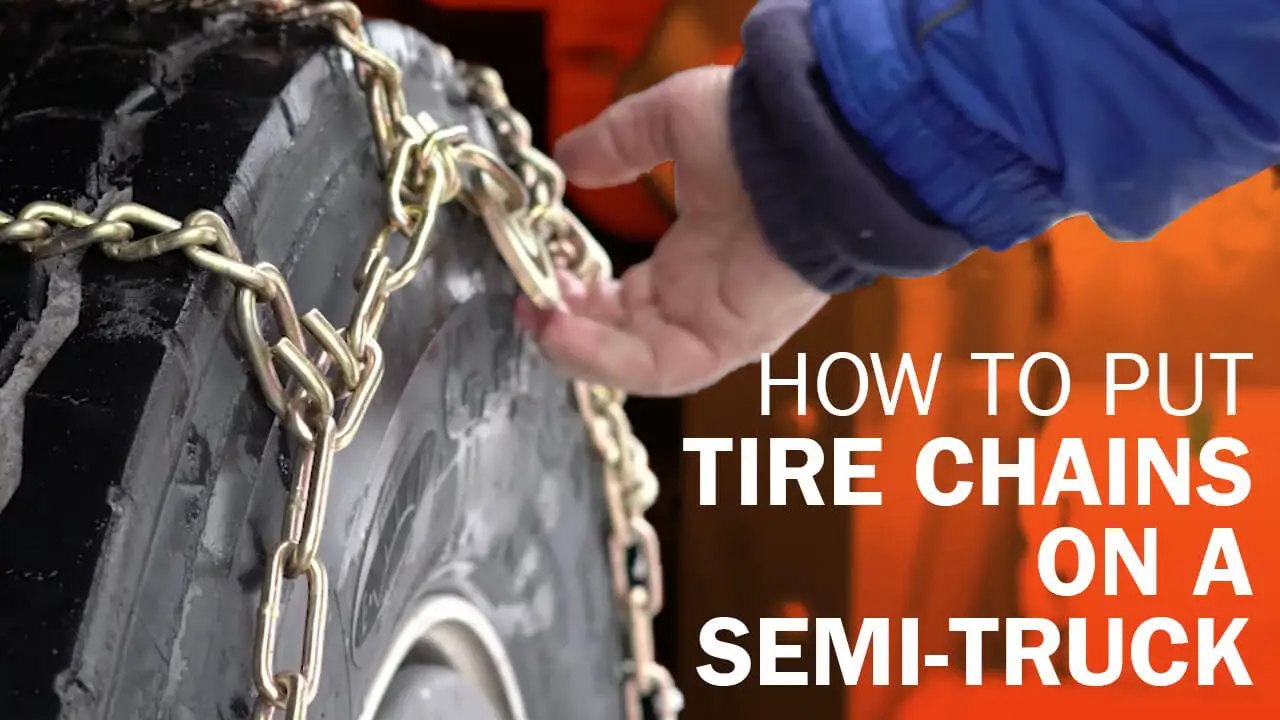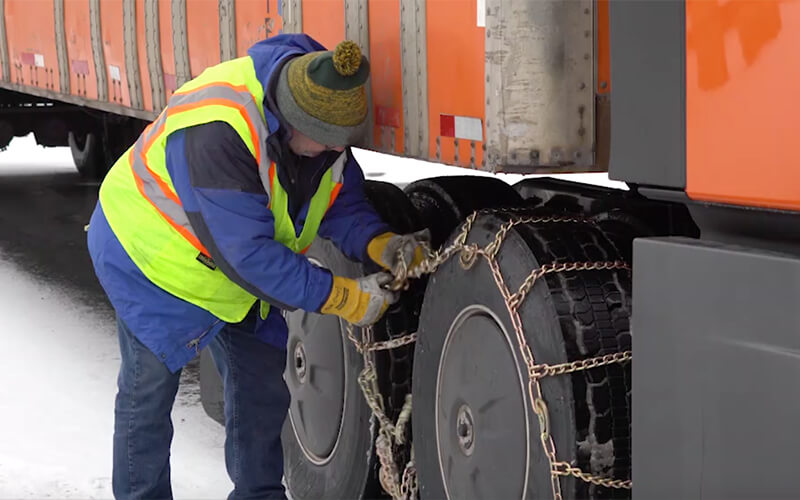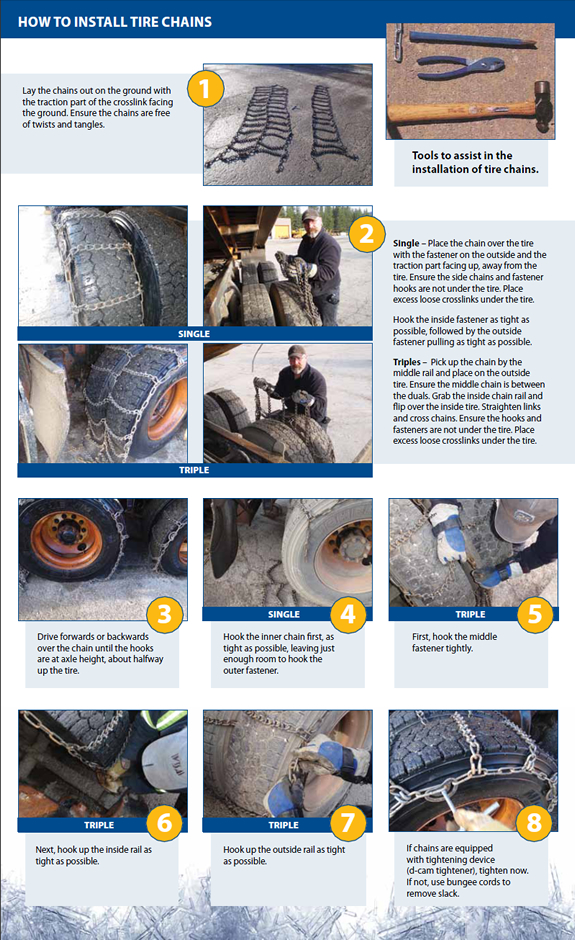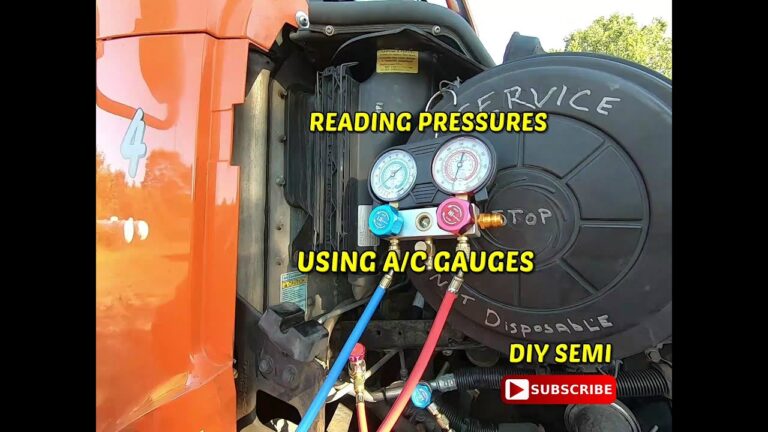
To put on tire chains on a semi, first, lay out the chains flat on the ground and drive the semi over them. Then, connect the chains and tighten them.
When it is done, drive the semi a short distance and check for any slippage before hitting the road. When driving in snowy or icy conditions, tire chains are crucial for maintaining traction and preventing accidents. As a professional truck driver, knowing how to install tire chains on a semi is a vital skill.
This guide will provide a step-by-step explanation to ensure that you can confidently and safely put on tire chains when faced with challenging weather conditions. By following these simple instructions, you can equip and prepare your semi for winter driving, ensuring safety and peace of mind while on the road.
Navigate As You Want: [show]
Choosing The Right Tire Chains
Choosing the right tire chains for a semi can be a crucial task to ensure safety and traction on icy roads. Learn how to properly put on tire chains and enhance your vehicle’s grip in challenging conditions.
Putting on tire chains on a semi is essential for safe winter driving. When it comes to choosing the right tire chains, there are a few factors to consider. First, understand the types of tire chains available. There are ladder-style chains, which are commonly used for heavy-duty vehicles like semis. Another option is diamond-pattern chains, which provide better traction on icy roads. Additionally, there are also cable-style chains, which are lightweight and easy to install.
Determining the correct size of tire chains is equally important. Most manufacturers provide a recommended chain size chart based on tire size. Take the time to measure your tires correctly to ensure a proper fit. Remember to measure both the tire width and height to find the right size. Before hitting the road, make sure the chains fit snugly and are evenly distributed across the tire tread. Checking for any loose or damaged links is also crucial for a secure installation.
Preparing Your Vehicle
Preparing Your Vehicle: When putting tire chains on a semi, it’s crucial to find a safe and flat location. Ensure that you are away from traffic and have enough space to maneuver around the vehicle. Removing excess snow and ice from the tires is essential before installing the tire chains. Use a shovel or brush to clear out any accumulation on and around the tires. This will help in securing the chains properly and ensure better traction on the road.
Installing The Tire Chains
Laying Out the Chains: Lay the chains flat on the ground and untangle any knots or twists. Ensure that the chains are the correct size for the tires, as an improperly sized chain may not provide adequate traction.
Attaching the Chains to the Tire: Position the chains around the tire and secure them tightly. Make sure that the fastening mechanisms are securely in place, and double-check that the chains are evenly distributed around the tire.

Credit: schneiderjobs.com
Adjusting And Securing The Chains
|
Adjusting and Securing the Chains
In order to put on tire chains on a semi properly, adjusting and securing the chains is crucial. Tightening the chains is the first step to ensure they stay in place. Begin by slacking the chains and placing them over each tire, ensuring they are centered and evenly spread. Next, loop the ends of the chains together and attach the fasteners. Then, move the truck forward a few feet to create tension in the chains. To achieve the desired tightness, locate the chain tensioners and adjust accordingly. Ensuring proper tension is vital to prevent the chains from slipping or coming loose during driving. Continue to monitor the chains periodically, especially if there are changes in weather conditions or the surface of the road. |
Practice Safe Driving With Tire Chains
Practice safe driving during snowy conditions by using tire chains on your semi. Reduce speed and acceleration to avoid accidents and skidding. By maintaining extra distance between your vehicle and the one in front, you can prevent sudden stops and collisions. Slow down gradually when approaching turns or curves to maintain control and avoid sliding on icy roads. When it comes to putting on tire chains, follow the instructions provided by the manufacturer carefully. Make sure the chains are installed correctly and are tightly secured to your tires. Regularly inspect the chains for any damage or signs of wear and replace them if necessary. Remember to remove the tire chains once you reach road conditions that no longer require them. Stay safe on the road by practicing these safe driving measures.

Credit: www.tranbc.ca

Credit: m.youtube.com
Frequently Asked Questions On How To Put On Tire Chains On A Semi
How Do You Install Tire Chains On A Semi Truck?
To install tire chains on a semi truck, start by laying the chains flat on the ground and making sure they are untangled. Position the chains over the tires, making sure they are centered. Hook the chain ends together and tighten them snugly.
Drive a short distance to check the tightness and readjust if necessary.
Are Tire Chains Necessary For A Semi Truck?
Tire chains are necessary for a semi truck in snowy or icy conditions, as they provide extra traction and improve safety. Chains increase tire grip, reducing the chances of skidding or sliding when driving on slippery roads. They are particularly useful when climbing gradients or driving on roads that are not adequately cleared of snow.
How Do Tire Chains Work On Semi Trucks?
Tire chains work on semi trucks by providing additional traction on slippery surfaces. The chains create a grip between the tire and the road, allowing the truck to maintain control and prevent sliding. The chain links dig into the snow or ice, giving the tires a better grip and improving overall stability and maneuverability.
Conclusion
Putting on tire chains on a semi may seem like a daunting task, but with the right knowledge and preparation, it can be done smoothly and effectively. By following the step-by-step instructions provided in this blog post, you can ensure the safety and stability of your truck when navigating through icy or snowy roads.
Remember to always prioritize your safety and that of others on the road. Stay prepared, stay cautious, and stay confident while driving during winter conditions.





